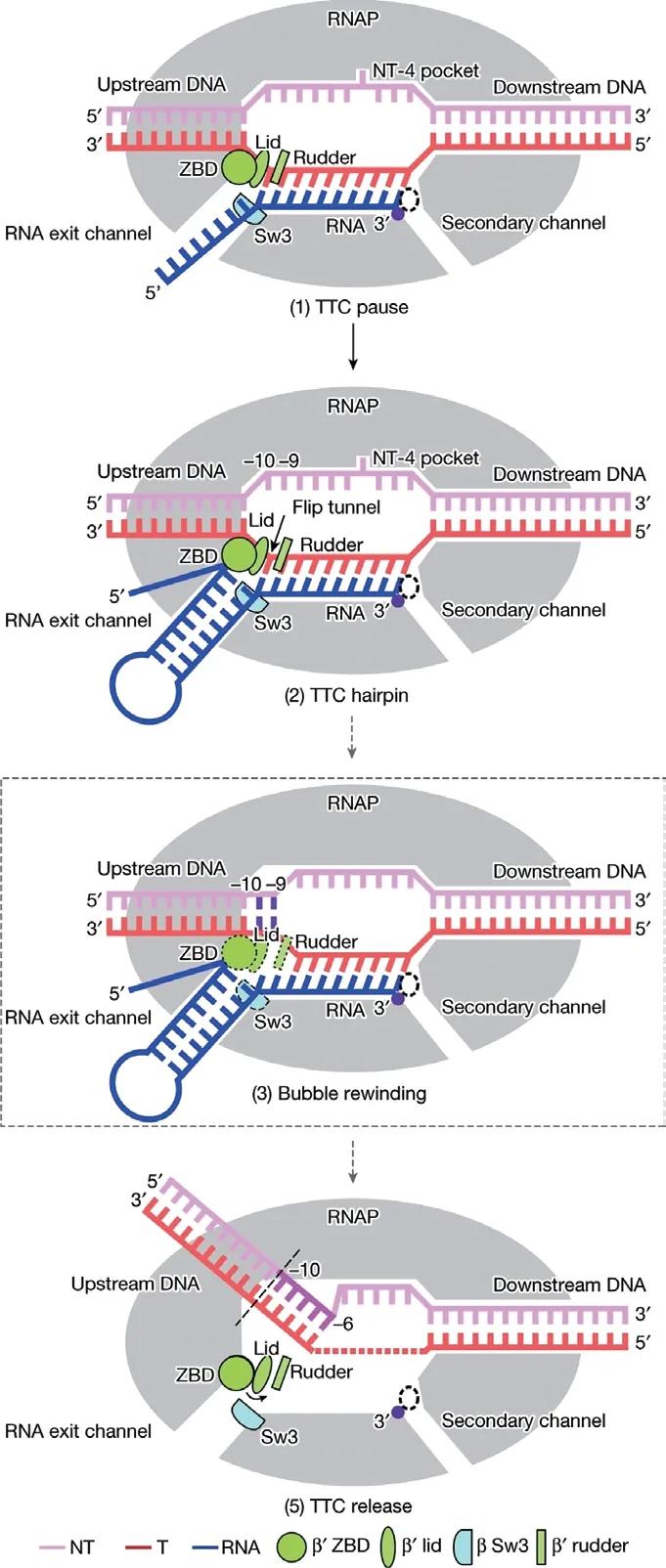A Structural Insight into Gene Transcription Termination
By YAN Fusheng (Staff Reporter)
Scientists have long studied gene transcription to better understand gene regulation and expression in living organisms.Transcription is the process by which DNA is copied into RNA, which then produces proteins that perform various functions in the body.Efficient and accurate transcription termination is crucial for controlling gene expression and maintaining genomic integrity.
Previously, it was known that transcription termination could occur through a factor-independent pathway called intrinsic termination.In this pathway, RNA polymerase recognizes specific terminator sequences and spontaneously releases the newly formed RNA.However, the structural mechanism underlying this process remained unclear.
In a recent study, a team of scientists jointly led by Dr.ZHANG Yu at the Shanghai Institute of Plant Physiology and Ecology of the Chinese Academy of Sciences, Dr.Robert Landick at the University of Wisconsin-Madison, and Dr.FENG Yu at the Zhejiang University School of Medicine, utilized single-particle cryo-electron microscopy to capture key intermediate states of bacterial intrinsic termination complexes.These structures provided detailed insights into the step-by-step process of transcription termination, including RNA polymerase pausing at terminator sites, terminator hairpin folding,transcription bubble rewinding, and the release of nascent RNA while retaining partially rewound DNA.
The study entitled “Structural basis for intrinsic transcription termination”was published online inNatureon January 11, 2023.
This new knowledge serves as a foundation for future research into gene regulation, opening new avenues for understanding transcription termination in various organisms.

 Bulletin of the Chinese Academy of Sciences2023年1期
Bulletin of the Chinese Academy of Sciences2023年1期
- Bulletin of the Chinese Academy of Sciences的其它文章
- Exercise: The Fountain of Youth at a Cellular Level
- How SARS-CoV-2 Hijacks Our Immune Cells
- Stretchy Electronic Devices Assembled in a Lego-like Way
- Engineering Crops to Thrive on Sodic Lands
- Genetically Engineered Bacteria Offer New Hope in Cancer Treatment
- Gene Editing Restores Hearing in Mice
